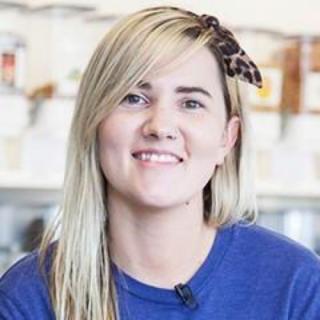Conference: Jun 26-28, 2017
Workshops: Jun 29-30, 2017
Presentation: 0 to 100 days - Running DRTs at Dropbox
Location:
- Salon D
Duration
Day of week:
- Tuesday
Level:
- Intermediate
Persona:
- DevOps Engineer
Key Takeaways
- Learn how Dropbox uses disaster recovery testing on extremely large scale systems.
- Understand the benefits of establishing a culture that encourages and promotes active failure testing.
- Hear about the principles that Dropbox uses allowing teams to focus on the system seams for aggressive failure testing.
Abstract
Thomissa joined the Dropbox Infrastructure team 100 days ago. This presentation will share her experiences developing and rolling out new Disaster Recovery Testing techniques at Dropbox. Tammy will join Thomissa to share how her team runs DRTs and has implemented the techniques Thomissa has evangelized.
Dropbox was founded by engineers, and the ethos of technical innovation is fundamental to our culture. We’ve grown enormously since launching in 2008, surpassing 500 million signups and 500 petabytes of user data. To give you a sense of our incredible growth, we had only about 40 petabytes of user data in 2012! With such rapid growth comes increased failures and operational challenges. We look forward to sharing with you how Dropbox focuses on reliability while scaling.
Interview
Similar Talks

Tracks
Monday, 13 June
-
Architectures You've Always Wondered About
Case studies from: Google, Linkedin, Alibaba, Twitter, and more...
-
Stream Processing @ Scale
Technologies and techniques to handle ever increasing data streams
-
Culture As Differentiator
Stories of companies and team for whom engineering culture is a differentiator - in delivering faster, in attracting better talent, and in making their businesses more successful.
-
Practical DevOps for Cloud Architectures
Real-world lessons and practices that enable the devops nirvana of operating what you build
-
Incredible Power of an Open-Sourced .NET
.NET is more than you may think. From Rx to C# 7 designed in the open, learn more about the power of open source .NET
-
Sponsored Solutions Track 1
Tuesday, 14 June
-
Better than Resilient: Antifragile
Failure is a constant in production systems, learn how to wield it to your advantage to build more robust systems.
-
Innovations in Java and the Java Ecosystem
Cutting Edge Java Innovations for the Real World
-
Modern CS in the Real World
Real-world Industry adoption of modern CS ideas
-
Containers: From Dev to Prod
Beyond the buzz and into the how and why of running containers in production
-
Security War Stories
Expert-level security track led by well known and respected leaders in the field
-
Sponsored Solutions Track 2
Wednesday, 15 June
-
Microservices and Monoliths
Practical lessons on services. Asks the question when and when to NOT go with Microservices?
-
Modern API Architecture - Tools, Methods, Tactics
API-based application development, and the tooling and techniques to support effectively working with APIs in the small or at scale. Using internal and external APIs
-
Commoditized Machine Learning
Barriers to entry for applied ML are lower than ever before, jumpstart your journey
-
Full Stack JavaScript
Browser, server, devices - JavaScript is everywhere
-
Optimizing Yourself
Keeping life in balance is always a challenge. Learning lifehacks
-
Sponsored Solutions Track 3










